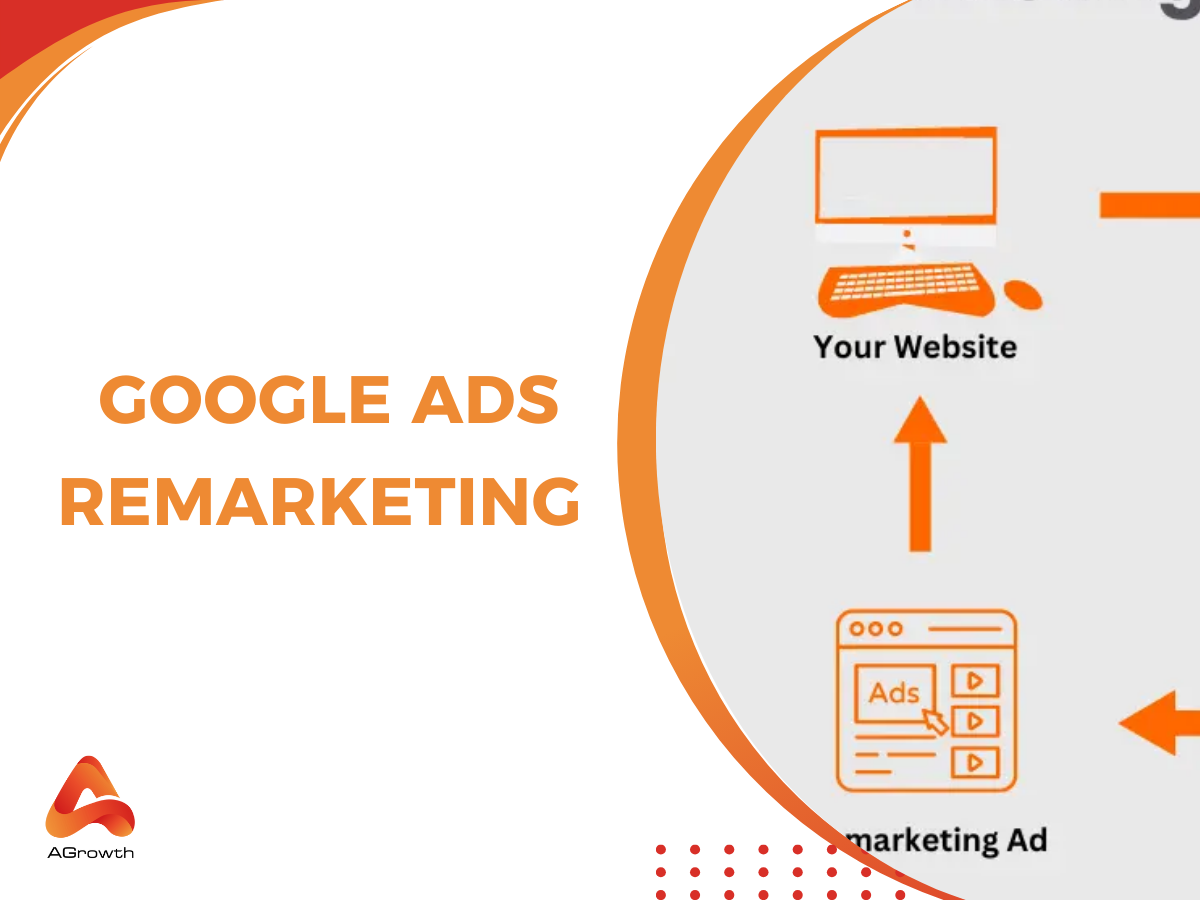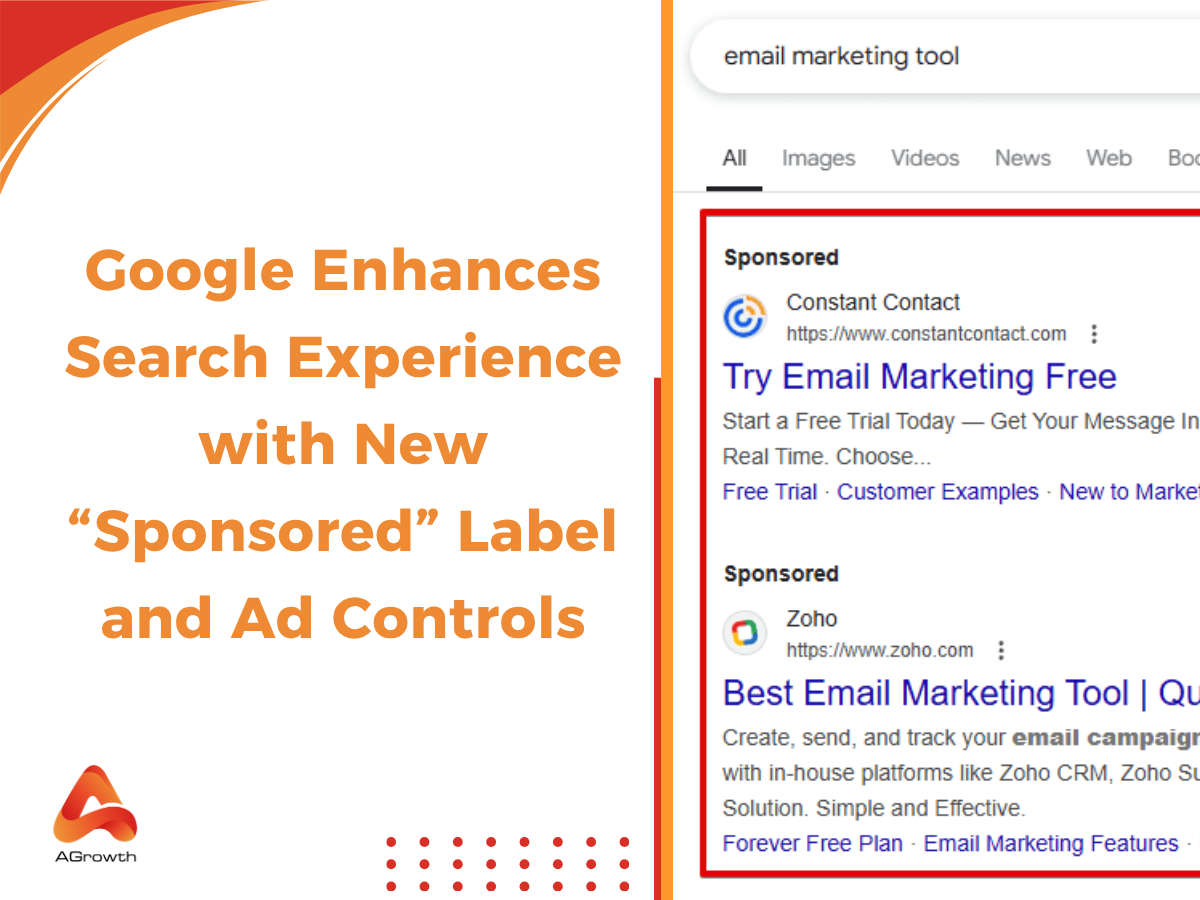
Table of Contents
Google Ads Remarketing in 2025: Setup, Best Practices & ROI Secrets
Google Ads Remarketing allows you to re-engage users who’ve already interacted with your brand, keeping your message top of mind and guiding them back toward conversion. In 2025, with advanced targeting, automation, and creative formats, remarketing isn’t just a “nice-to-have” — it’s a conversion powerhouse.
This guide is designed for advertisers and businesses already running campaigns who want to maximize ROI through strategic remarketing. We’ll cover everything: from setup and campaign types to advanced strategies, tools, and common pitfalls
What is Google Ads Remarketing?
Google Ads Remarketing is a targeting method that enables advertisers to show ads to users who have previously visited their website, used their mobile app, or interacted with their content.
Put simply, it’s the digital equivalent of following up with a warm lead. Rather than targeting cold audiences, remarketing focuses on people who’ve already shown interest in your products or services.
Examples of Remarketing Ads
Think of remarketing ads as tailored nudges:
-
A display remarketing banner showing the exact product a user viewed.
-
Remarketing AdSense placements on relevant blogs.
-
A Google Shopping remarketing carousel featuring items left in a cart.
When done right, these ads feel like a helpful reminder, not an intrusion.
Why Remarketing is Crucial for Digital Advertising
For seasoned advertisers, remarketing is far more than a tactic—it’s a strategic multiplier that supercharges campaign effectiveness and maximizes ROI. Its true power lies in precision: targeting warm audiences already familiar with your brand, and influencing them with purpose.
1. Higher Conversion Rates
Remarketing delivers results. Retargeted ads consistently outperform standard display ads by a wide margin. Remarketing audiences deliver 2–3× higher CTR than new visitors, showcasing just how much more engaging these ads can be for users who’ve already interacted with your brand. Marketing benchmarks further reveal that retargeted ads can generate CTRs up to 10× higher than typical display ads.
2. Lower Cost per Acquisition (CPA)
Remarketing targets users whose interest has already been demonstrated, making campaigns more efficient. Google Ads remarketing campaigns average a 32% lower CPA than regular search ads and a staggering 65% lower CPA than display campaigns. This efficiency helps stretch budgets further and improves overall campaign profitability.
3. Superior Budget Efficiency
With remarketing, you’re spending dollars on audiences more likely to convert. 26% of users return to a site after being retargeted—a strong indicator of how remarketing drives effective recapture engagements. Additionally, retargeting ads often deliver up to 400% more conversions, underscoring how reinvested budget can produce outsized returns.
4. Personalization at Scale
Dynamic remarketing enables you to display ads that reflect the precise products or actions a user took—boosting relevance and impact. This level of personalization fosters trust and significantly uplifts performance.
What Types of Google Ads Remarketing
Remarketing in Google Ads isn’t a one-size-fits-all tactic. Google offers several campaign types, each designed for different user behaviors, ad formats, and stages of the funnel. Choosing the right type — or combining them strategically — is key to maximizing ROI. Below, we’ll break down each option so you can align your targeting with your business goals.
1. Standard Remarketing (Display Network)
Standard remarketing shows static or responsive remarketing display ads to people who have previously visited your website or app. These ads appear across millions of sites and apps within the Google Display Network (GDN).
When to use it:
-
To maintain brand visibility after someone visits your site.
-
For broad display ad retargeting across multiple content categories.
Example:
A user browses your service page but doesn’t submit a form. Later, they see your ad while reading news online, reminding them of your offer and prompting them to return.
2. Dynamic Remarketing
Dynamic remarketing automatically generates ads that feature the exact products or services a visitor viewed on your site. This is powered by your Google Merchant Center feed or a custom business feed.
When to use it:
-
For e-commerce stores with large product catalogs.
-
To personalize offers at scale without manually creating hundreds of creatives.
Example:
A visitor checks out three different running shoe models. Later, they see an ad showing those exact products — plus similar styles — along with the current price and a discount banner.
3. Remarketing Lists for Search Ads (RLSA)
With remarketing lists for search ads, you target users on Google Search who have already visited your site. Instead of showing display banners, your ads appear as remarketing search ads when they search relevant keywords again.
When to use it:
-
To bid more aggressively for high-value audiences.
-
To present tailored ad copy based on prior site interactions.
Example:
A user visited your software pricing page last week but didn’t buy. Today, they search “best CRM for startups.” Your RLSA campaign ensures your ad appears at the top with a limited-time offer.
4. Video Remarketing (YouTube)
Targets people who have interacted with your YouTube videos or channel — either by watching, liking, commenting, or subscribing. Ads can run before, during, or after other YouTube content.
When to use it:
-
For brand reinforcement among video-engaged audiences.
-
To promote product demos, tutorials, or webinars.
Example:
Someone watches your “how-to” video but doesn’t visit your site. Later, a YouTube pre-roll ad promotes a special offer for the product featured in the tutorial.
5. Customer Match Remarketing
Allows you to upload a list of customer emails or phone numbers to Google Ads. Google matches them with logged-in users across Search, YouTube, Gmail, and the Display Network.
When to use it:
-
For upselling or cross-selling to existing customers
-
To re-engage inactive subscribers with fresh offers.
Example:
You upload your holiday customer list and display and retargeting campaigns offering early access to new product lines.
Google Ads Remarketing Setup Step-by-Step
Setting up remarketing requires both technical tagging and campaign configuration.
Step 1: Create Your Remarketing Audience List
Inside Google Ads, navigate to Tools → Audience Manager. Define your audience using website visitors, app users, or customer lists.
Step 2: Install the Remarketing Pixel / Tag
Use the Google Ads remarketing tag or deploy via Google Tag Manager. This remarketing pixel captures visitor data for targeting.
Step 3: Set Up Your Campaign
Choose Display, Search, or Shopping. Select your audience list, set budgets, and define creative formats.
Step 4: Launch and Test
Go live, then monitor performance in real time.
How to Set up Google Ads Remarketing through a Remarketing List
Setting up Google Ads remarketing through a remarketing list allows you to target users based on their past interactions with your site or app. Unlike a pixel-only setup, remarketing lists give you granular control over which visitors are included, how long they stay in your audience pool, and where your ads are shown.
Step 1 – Access Audience Manager
Go to your Google Ads dashboard → Tools & Settings → Shared Library → Audience Manager.

Step 2 – Create a New Remarketing List
Click “+ New audience”

Step 3: Choose Website Visitors, App Users, or Customer List.

Step 4 – Name the audience.
Use specific titles that reflect the image of your customers.
Step 5 – Determine the data to upload.
This includes Email, phone number, mailing address, and mobile device ID. Use the template provided by Google or create a CSV file in Excel.

How to Configure Google Ads Remarketing with a Remarketing Tag
The Google Ads Remarketing Tag — often called a remarketing pixel — is a small snippet of JavaScript code that tracks visitor behavior across your website. By placing it on your pages, you enable Google to build remarketing lists based on user activity, which can later be targeted with display and retargeting ads.
Here’s the 2025 step-by-step process for setting it up:
Step 1 – Access Google Ads and Open Audience Manager
-
Sign in to your Google Ads account.
-
From the top navigation bar, click the Tools & Settings icon.
-
Under Shared Library, select Audience Manager.

Step 2 – Create a New Audience Source
-
Click on Audience Sources.
-
Locate the Google Ads Tag and select Set up Tag.

Step 3 – Choose Data Collection Preferences
Decide what kind of data your tag will capture:
-
Standard data – basic page visits.
-
Custom parameters – such as product IDs, cart values, or categories for dynamic remarketing. Once chosen, click Save and Continue.

Step 4 – Install the Tag on Your Website
You can deploy the remarketing tag in several ways:
-
Google Tag Manager – the fastest, most flexible method.
-
Direct code installation – paste the provided JavaScript snippet into your site’s global header so it appears on every page.
-
Email to your developer – Google provides ready-to-send instructions for webmasters.

If you want to install it, click the install the tag yourself. Google provides a snippet and instructions on how to install.

Common Mistakes in Google Ads Remarketing
Even seasoned advertisers can leave money on the table when running Google Ads remarketing campaigns. While remarketing is one of the highest-ROI tactics in the Google ecosystem, small errors in audience definition, creative execution, or optimization can drastically reduce performance. Below are the most common pitfalls — and how to avoid them.
1. Audience Lists That Are Too Broad or Too Narrow
A remarketing list defines who will see your ads, so an imprecise setup will derail the entire campaign.
-
Too Broad: Targeting “all website visitors” over a 540-day window might seem like a good way to get reach, but it dilutes relevance. Someone who visited your site over a year ago may have little to no purchase intent today.
-
Too Narrow: Targeting only users who abandoned carts in the last 7 days may limit your list size so much that ads rarely serve, making it impossible to scale.
2. No Frequency Cap
Without a frequency cap, you risk overwhelming users with repetitive ads. This can lead to:
-
Banner blindness — users stop noticing your ads entirely.
-
Negative brand sentiment — prospects associate your brand with spam.
-
Wasted budget — serving impressions to people who have no intention to buy.
3. Generic Creative That Ignores User Behavior
Remarketing ads work because they reference a user’s previous interaction with your brand. Running generic banners with vague copy like “Shop Now” misses the opportunity to reconnect meaningfully.
Examples of Generic vs. Relevant Creative:
-
Generic: “Check out our new collection.”
-
Relevant: “Still thinking about the red leather jacket? Now 15% off — this week only.”
4. Poor Landing Page Experience
Even if your Google Ads retargeting campaign is perfectly set up, a weak post-click experience will kill conversions.
Common issues:
-
Sending users to a generic homepage instead of the product or category they viewed.
-
Slow-loading pages that cause drop-offs.
-
Mobile pages that don’t render correctly.
-
Inconsistent messaging — the landing page doesn’t match the ad promise.
5. Neglecting Remarketing Tag Maintenance
A broken remarketing tag or incorrectly configured remarketing pixel can silently shrink your audience list without you realizing it.
Best Practice:
-
Regularly audit tag firing using Google Tag Manager’s preview mode or Tag Assistant.
-
Confirm tags are on all relevant pages, not just the homepage.
-
Use event parameters to track specific user actions for more granular audience building.
6. Ignoring Performance Data
Some advertisers run Google remarketing campaigns without monitoring key metrics like CTR, CPA, and ROAS. This results in campaigns running for months with declining returns.
7. Not Excluding Converted Users
Showing ads to people who have already purchased (unless you’re upselling) wastes spend and irritates customers.
Google Ads Remarketing Best Practices
Based on Google’s official guidance, industry benchmarks, and our own campaign experience, here are proven strategies to maximize ROI.
1. Define Your Remarketing Strategy Upfront
Before running a single ad, clarify:
-
Audience Segments: Decide whether you’ll target all site visitors, cart abandoners, past purchasers, or people who visited specific product pages.
-
Offer & Messaging: Tailor creative for each segment — e.g., discounts for cart abandoners, new product announcements for previous buyers.
-
Funnel Stage Alignment: Choose campaign objectives that match the audience’s stage in the buyer journey (awareness, consideration, conversion).
Pro Tip: Use remarketing lists for search ads (RLSA) for high-intent users and display remarketing to re-engage mid-funnel prospects.
2. Start Broad, Then Narrow
For your first Google Ads remarketing campaign, target all users who visited your homepage in the last 30 days. This gives you enough data to identify patterns in engagement and conversion.
Once you have performance data, split audiences into narrower segments — such as:
-
Viewed the pricing page but didn’t convert
-
Abandoned cart with items above a certain value
-
Engaged with content but never added to cart
3. Control Ad Frequency (Frequency Capping)
Overexposure can kill performance. Frequency capping lets you limit the number of times an ad is shown to the same user within a set period.
-
Recommended: 3–5 impressions per user per day for display campaigns.
-
Why: Avoid ad fatigue, which can increase CPA and lower CTR.
4. Match Creative to Audience Intent
A remarketing ad should feel personal. Use:
-
Dynamic remarketing ads to pull product images, prices, and descriptions from your Merchant Center feed.
-
Messaging that directly references the user’s behavior (e.g., “Still thinking about this product?”).
-
Seasonal or urgency-driven copy (“Only 2 left in stock!”).
This approach works well for remarketing display ads, remarketing Google Shopping, and search remarketing.
5. Optimize Landing Page Relevance
Send remarketing traffic to a highly relevant landing page, not your generic homepage.
-
Example: If a user viewed a specific shoe, link them directly to that product page.
-
Why: This improves Quality Score, lowers CPC, and increases conversion likelihood.
6. Layer Additional Targeting
If you have a limited budget, combine remarketing with other targeting methods to focus your spend:
-
In-market audiences for users actively researching related products.
-
Demographic filters to target by age, gender, or household income.
-
Geo-targeting to limit campaigns to high-performing regions.
7. Exclude Irrelevant or Low-Quality Placements
For display and retargeting campaigns, use site category exclusions to avoid showing ads on:
-
Gaming sites (low purchase intent)
-
Tragedy/conflict content
-
Parked domains and error pages
This improves brand safety and ensures your budget is spent on high-quality inventory.
8. Continuously Test and Refine
Remarketing monitoring isn’t a “set it and forget it” process.
-
Run A/B tests for creative, calls-to-action, and offer types.
-
Rotate creatives every 2–4 weeks to combat ad fatigue.
-
Monitor KPIs like CTR, CPA, and ROAS to guide optimization.
9. Automate Where Possible
Leverage automated remarketing and smart bidding strategies like Target CPA or Target ROAS.
-
Google’s machine learning can adjust bids in real-time based on conversion likelihood.
-
Dynamic ad templates can refresh automatically with updated product info.
Supercharge Your Google Ads Remarketing with AGrowth
Running high-performing Google Ads remarketing campaigns takes more than just placing a pixel and choosing an audience. It requires continuous monitoring, creative testing, budget optimization, and compliance with Google’s policies.
That’s where AGrowth comes in.
We’re a specialized agency offering Google Ads account rentals along with expert campaign management. Whether you need:
-
Fast access to a verified Google Ads account with higher trust levels
-
Professional setup of remarketing tags and audience lists
-
Ongoing remarketing monitoring and optimization to maximize ROAS
-
Strategic guidance to avoid common mistakes and scale efficiently
💰 Affordable pricing plans:
-
White & Grey Hat accounts: from 3%
-
Black Hat accounts: from 5%
Special offer: Get up to $348 in bonuses when you start today.
Contact AGrowth now to unlock more from your Google Ads retargeting strategy and start converting your warm audiences at scale!
Read more:









Your comment